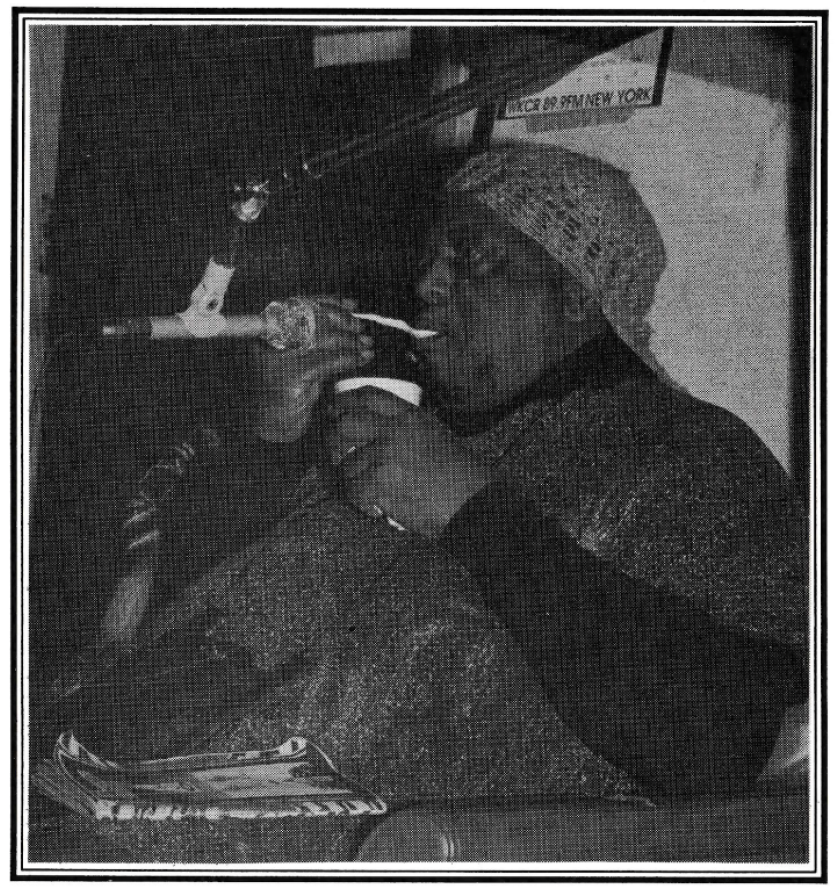"The Original FM": The Columbia University Radio Club
On July 18, 1939, a 400-foot antenna tower in Alpine, New Jersey broadcast the very first FM transmission. Edwin H. Armstrong, a Columbia University professor, was the first to develop this alternative to traditional AM broadcasts. WKCR shares a history with Armstrong and his groundbreaking work, accounting for the marginally accurate phrase, "The Original FM" occasionally heard on-air. Beginning as the Columbia University Radio Club (CURC) as early as 1936, the organization was not a radio station as we know it, but rather an organization concerned with the technology of radio communications. As membership grew, however, the nascent club turned its efforts to broadcasting. Armstrong helped the students in their early efforts, donating a microphone and turntables when they designed their first makeshift studio in a dorm room (1107 John Jay, to be precise).
The first official broadcast took place on February 24, 1941. Later that year, on October 10, 1941, the CURC was given its FCC license. Following World War II, the FCC began codifying the formalities of being a radio station, and it was at this time that the station adopted its call letters, WKCR (King’s Crown Radio). During these early years, the station broadcast in AM, devoting much of its airtime to studio programming, including both original drama and comedy shows and lectures by Columbia University faculty, but also rebroadcasting experimental FM transmissions from Professor Armstrong's W2XMN station. The station embraced FM itself in 1956, sending out its first transmission at its current signal, 89.9 megacycles. The broadcast was transmitted from the rooftop of Philosophy Hall, using a 10-watt transmitter from the estate of Professor Armstrong. King's Crown Radio: WKCR On Campus and Off. By 1960, the station was armed with a new transmitter at the top of 515 Madison Avenue, allowing WKCR broadcasts to reach beyond the campus. The university also gave its support to the station, providing it with new facilities in Ferris Booth Hall, the new student center. Programming largely had an intellectual focus, committed to broadcasting lectures and interviews with not only Columbia affiliates, but other social, political, and artistic innovators of the time, including Dr. Martin Luther King, Jr., William F. Buckley, Jr., and James R. Hoffa.
Members of the News Department would make annual trips to Washington, D.C., to interview elected officials. Music programs on the station included jazz, folk, bluegrass and Broadway, but the station's primary focus was classical. Sports broadcasts, which had provided play-by-play coverage of all home and away football and basketball games since 1958, continued and expanded to include swimming and crew events. By focusing on both Columbia-related broadcasts and intellectual and artistic programming without clear ties to the University, WKCR was firmly forging its niche as both a college radio station and a presence in the broader metropolitan area. This dichotomy was highlighted during the student strike of 1968. WKCR, the only source of live news from the campus, committed itself to reporting the events. News Department programmers, including Bob Siegel (now at NPR), tirelessly worked to broadcast to the public. The New York Times called the station's reporting "clear and concise with a sound of informality and immediacy." "The Alternative": WKCR's Programming Philosophy.
Following the student strike, WKCR moved into a transitional period. During the 1970s, the station took on its slogan and commitment to providing "The Alternative." WKCR strove to provide a home to music that was otherwise absent from the airwaves. In 1970, program director Tom Nesi appointed Jamie Katz as jazz director, who then recruited Phil Schaap and Sharif Abdus-Salaam, two programmers still broadcasting today. Within a year, 40 hours per week of airtime were devoted to jazz. The department featured both classic recordings and contemporary live performances, including a regular broadcast from the West End, which aired from 1977 to 1990.
The station also resolved to present new compositional and experimental music, establishing the New Music Department, which featured diverse composers and performers, such as Karlheinz Stockhausen, John Cage, and New York Downtown Scene pioneers John Zorn and Zeena Parkins. In 1987, Cage used WKCR's studio as his extended musical instrument. Station DJs passed him opera records from which he played random excerpts while manipulating all the other sound variables controllable from the studio. The Latin Department also began programming during this time. WKCR was one of the first stations to broadcast salsa, in contrast to commercial stations which tended to limit their Latin programming to older music and romantic ballads. American folk traditions were also featured, with blues, country, and bluegrass programming.
Throughout the 1970s and '80s, WKCR established the commitment to alternative programming which continues to guide the station today. The World Trade Center to 4 Times Square WKCR ushered in a new era with its transmitter at the pinnacle of the World Trade Center's north tower. From April 29, 1985 to September 11, 2001, the station broadcast to a potential 12 million people in the tri-state area. Following the terrorist attacks on 9/11, the station underwent a difficult period. Broadcasting from its backup transmitter atop Carman Hall, the station finally secured a new antenna at 4 Times Square in 2003. Since then, the station has continued its long tradition of providing "The Alternative," with nine distinct departments each working towards this common goal.
